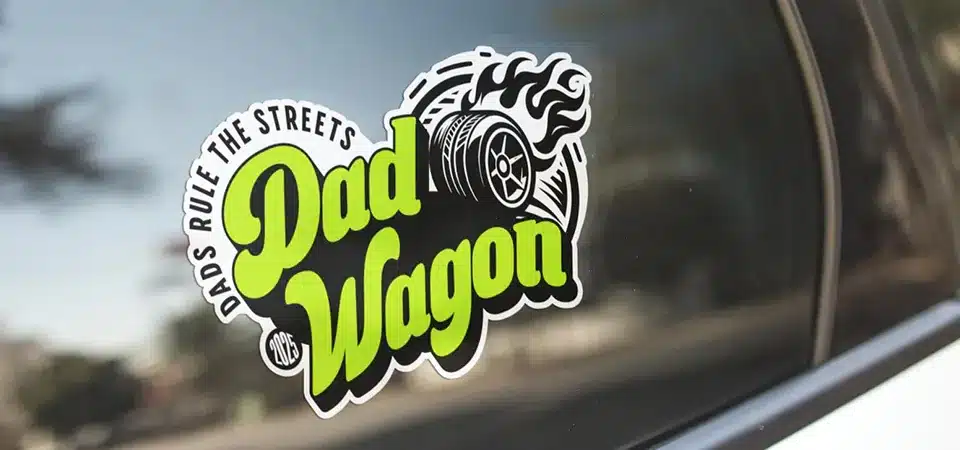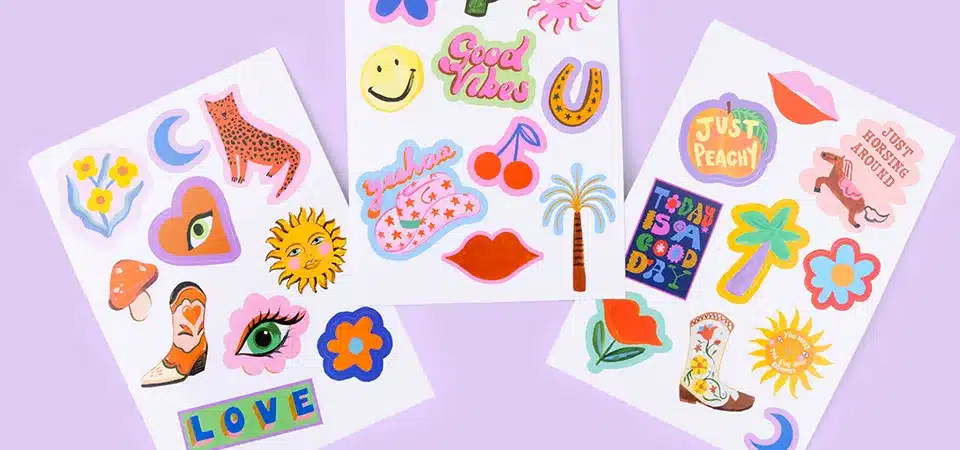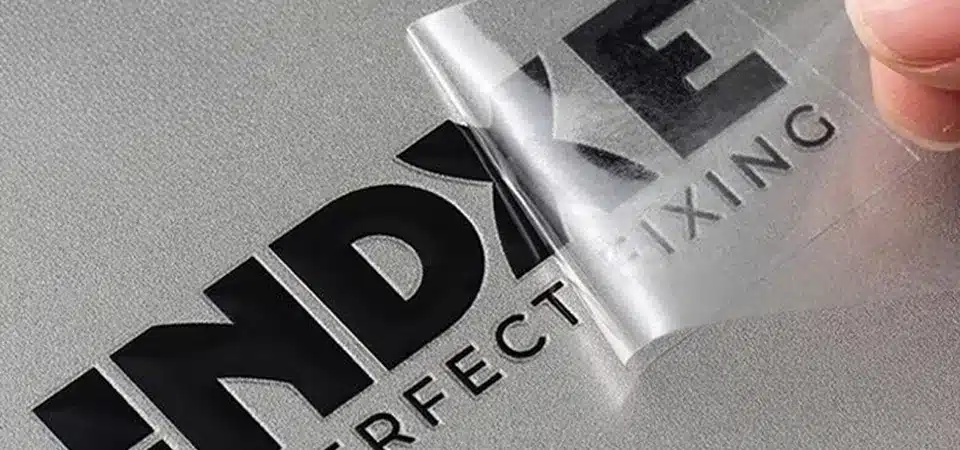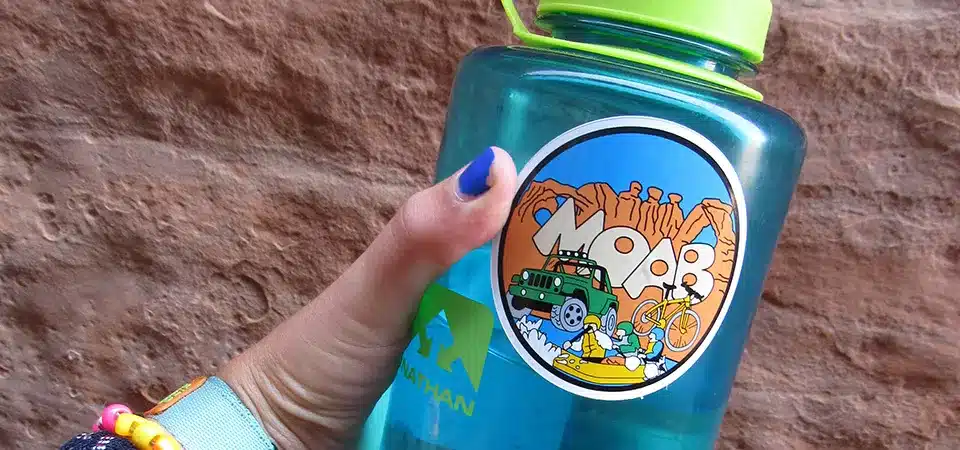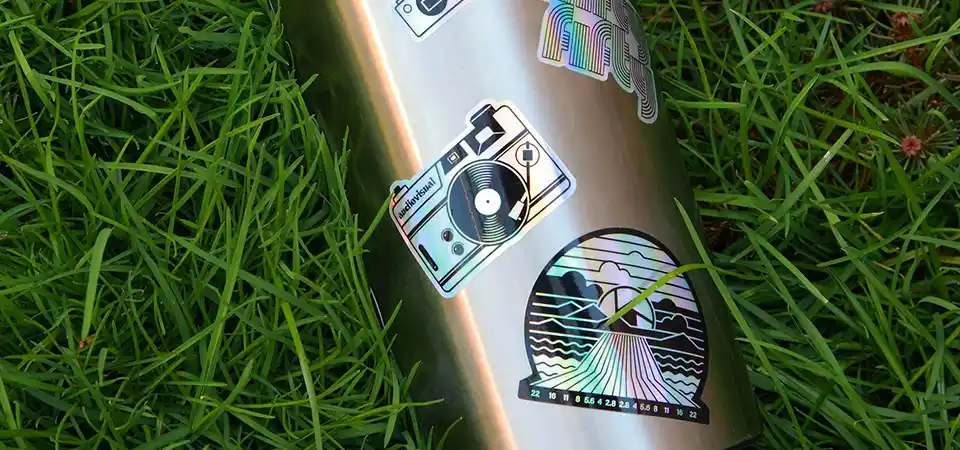You want to personalize your car, but you're terrified of damaging the paint. You have nightmares of peeling clear coats, faded patches, and sticky messes that never come off.
Yes, you can safely put high-quality vinyl stickers on your car. Automotive-grade vinyl is specifically designed to adhere to car paint and windows without causing damage. The key is to use the right material, apply it to a clean surface, and use gentle heat for removal.
As someone who runs a sticker printing business, I see this concern all the time. Customers want to express themselves, but they're rightfully protective of their car's finish. The good news is that modern vinyl technology is on your side. Think of it less like a cheap paper sticker and more like a miniature, flexible car wrap. It's made to live on your car. The problems people hear about almost always come from using the wrong type of sticker or from improper application or removal. Once you understand the basics, you can decorate your car with total confidence. Let’s break it all down.
Are Vinyl Stickers Safe for Cars?
You love the look of a custom decal, but the fear of permanent damage is real. You worry that putting a sticker on your car will be a decision you regret.
Yes, high-quality automotive vinyl is completely safe for factory car paint and windows. It uses an adhesive that bonds securely without eating into the clear coat. Damage typically only occurs from using cheap, non-automotive materials or when applying stickers over already damaged paint.
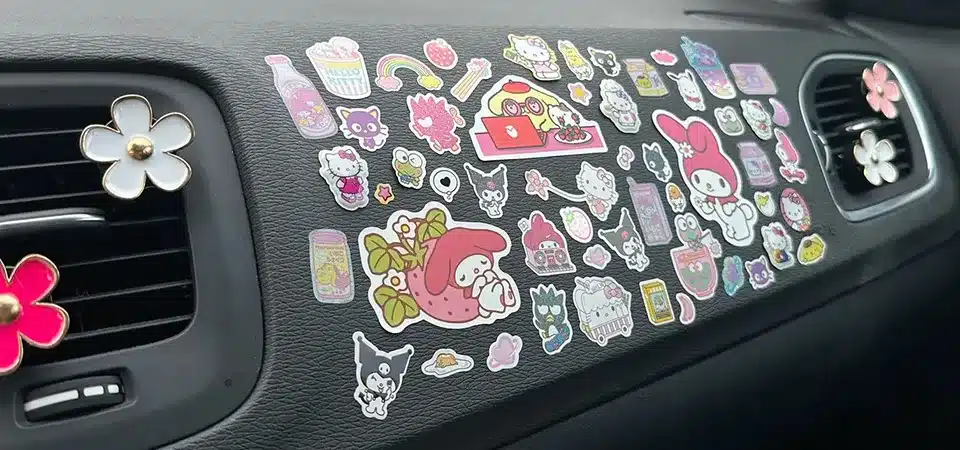
In my experience, the difference between a safe sticker and a harmful one comes down to quality. It's a classic case of "you get what you pay for." A high-quality sticker is an investment in your car's appearance and its protection.
What is a vinyl sticker?
First, let's be clear. A vinyl sticker is not the same as a paper bumper sticker. It's cut from a thin, durable sheet of plastic (vinyl) with a specialized adhesive on the back. Unlike paper stickers that fall apart in the rain or static clings that fly off on the highway, a vinyl sticker is engineered to withstand the elements for years.
Will vinyl stickers damage my car’s paint?
A quality automotive-grade vinyl sticker will not damage your car's factory paint. The adhesives are designed to be strong but removable. The vinyl itself also acts as a shield, protecting the paint underneath from sun exposure and minor scratches. The real danger comes from cheap craft vinyl. These alternatives use aggressive adhesives that can bond too strongly and potentially peel up the clear coat upon removal, especially on older or repainted surfaces. Sun exposure can also cause the paint around the sticker to fade over many years, leaving a darker "shadow" when the sticker is removed. This isn't damage from the sticker itself, but rather evidence of the protection it provided.
Are vinyl stickers safe for car windows?
Absolutely. Glass is a perfect surface for vinyl stickers. The adhesive won't damage the glass, and they are easy to remove with a plastic razor blade. However, you must consider safety and local laws. Never place a sticker where it obstructs your vision, especially on the front windshield or front side windows. Stickers on the rear window are common, but be careful not to damage the delicate heating element lines (defroster grid) during application or removal. If your windows are tinted, apply the sticker to the outside of the glass, never on the inside where it could damage the tint film.
Choosing the Right Vinyl Stickers for Your Car?
You know you need "good" vinyl, but the options are confusing. You see terms like "cast" and "calendered" and don't know which is right for your car.
For cars, always choose premium "cast" vinyl. It is more durable, flexible, and resistant to shrinking than cheaper "calendered" vinyl. Look for trusted automotive-grade brands like 3M or Avery Dennison to ensure longevity and safe removal.
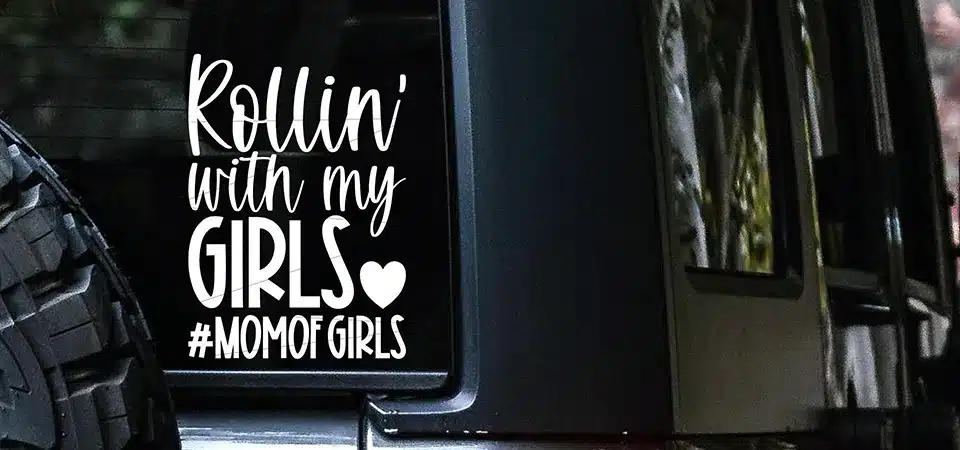
This is where my expertise as a sticker producer becomes really important for my clients. Choosing the right material is the single most important decision you'll make. A cheap sticker can fail in months, but a high-quality one can last for years.
Types of Vinyl
- Cast Vinyl: This is the premium choice. It's made by pouring liquid vinyl into a mold, which results in a very thin, flexible, and durable film. It conforms beautifully to curves and resists shrinking over time. This is what we use for professional car wraps and high-quality decals.
- Calendered Vinyl: This is a more budget-friendly option. It's made by rolling and stretching heated vinyl. It's thicker and less stable than cast vinyl, making it more prone to shrinking and cracking over time, especially in the sun. It's best for flat surfaces and short-term use.
| Feature | Cast Vinyl (Best for Cars) | Calendered Vinyl (Avoid for Cars) |
|---|---|---|
| Durability | 5-12 Years | 1-5 Years |
| Conformability | Excellent for curves | Poor, best for flat surfaces |
| Shrinkage | Minimal | Prone to shrinking and cracking |
| Cost | Higher | Lower |
Where to Buy and What to Look For
When buying, always ask the seller if the material is automotive-grade cast vinyl. Trusted brands like 3M and Avery Dennison are the industry standard. Whether you choose a custom design or a pre-made one, the material quality is what matters most. Pay attention to size and placement—avoid putting large stickers over panel gaps, complex curves, or on plastic trim where adhesion might be poor.
Vinyl Stickers vs. Bumper Stickers vs. Car Wraps: Know the Difference?
You're not sure if you need a simple sticker, a full wrap, or something else. Choosing the wrong product can be a waste of money and not achieve the look you want.
Vinyl stickers (decals) are for custom shapes and designs. Bumper stickers are simple, rectangular paper or vinyl stickers. Car wraps are large vinyl sheets that cover entire body panels. Choose based on your desired coverage, complexity, and budget.
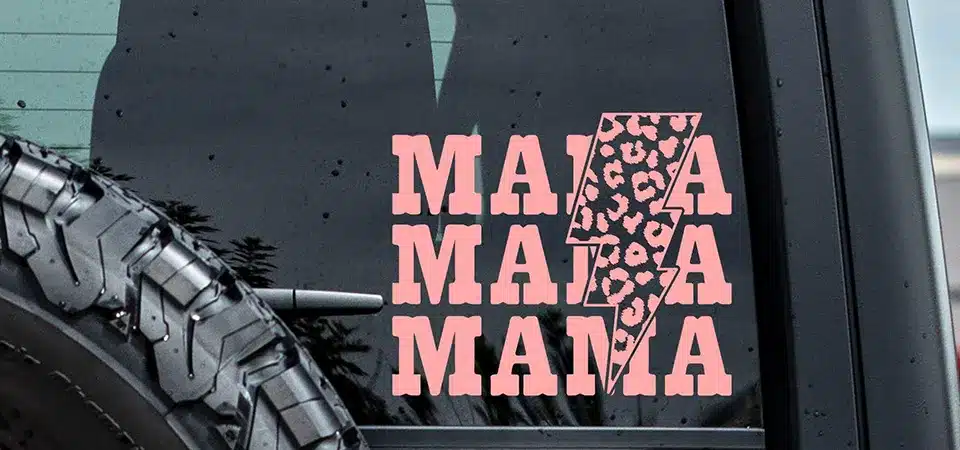
Each of these options serves a different purpose. I help clients decide this all the time by asking them one simple question: "What is your goal?" Are you sharing a message, adding a small design accent, or completely changing the color of your car?
Pros and Cons of Each
- Vinyl Decals:
- Pros: Highly customizable shapes and designs, looks painted-on, durable, affordable for specific graphics.
- Cons: Application requires care, limited to smaller areas than a wrap.
- Bumper Stickers:
- Pros: Very cheap, easy to apply, good for simple text or logos.
- Cons: Often made from cheaper materials (paper or calendered vinyl) that fade and crack, can be difficult to remove cleanly.
- Car Wraps:
- Pros: Completely transforms the car's look, protects the original paint underneath, can be removed to restore the factory color.
- Cons: Very expensive, requires professional installation.
- Magnetic Signs:
- Pros: Completely temporary and removable, can be swapped between vehicles.
- Cons: Can fly off at high speeds, dirt trapped underneath can scratch paint, less secure.
Choose a wrap for a total transformation, a magnet for temporary business advertising, and a high-quality vinyl decal for almost everything else.
How to Properly Apply Vinyl Stickers: Step-by-Step Guide?
You have your perfect sticker, but you're terrified of messing up the application. You picture a crooked, bubbly mess that you can't fix.
The secret to a perfect application is a perfectly prepared surface. Clean the area with soap and water, then with isopropyl alcohol. Apply the sticker in a warm, shaded spot using a squeegee to press it down from the center outwards.

I always tell my customers that five minutes of preparation is worth an hour of fixing mistakes. A flawless application is easy if you are patient and follow the steps. Don't rush it!
Step-by-Step Application
- Prep the Surface: This is the most important step. Wash the area thoroughly with soap and water. Once it's dry, wipe it down with a cloth and some isopropyl (rubbing) alcohol. This removes any wax, oil, or residue that could prevent the sticker from adhering properly.
- Find the Right Conditions: Don't apply stickers in direct sunlight or extreme cold. A shaded area with temperatures between 50-90°F (10-32°C) is ideal. Low humidity is also best.
- Position the Sticker: For larger stickers, use the "hinge method." Place the sticker where you want it and use a piece of masking tape on the top to create a hinge.
- Apply the Sticker: Flip the sticker up on its hinge. Peel the paper backing off. Now, holding the bottom edge, slowly lower the sticker while using a squeegee (or a credit card wrapped in a soft cloth) to press it onto the surface. Work from the center of the sticker outwards with firm, overlapping strokes. This pushes all the air out and prevents bubbles.
- Remove the Transfer Tape: Once the sticker is applied, burnish it one last time with the squeegee. Then, slowly peel the clear transfer tape off at a sharp, 180-degree angle. If any part of the sticker lifts, press the transfer tape back down and squeegee it again before peeling.
How to Care for Vinyl Stickers on Your Car?
Your sticker looks great now, but you want it to last. You're not sure how to wash your car or what could cause the sticker to fade and peel.
Hand wash your car with a gentle, non-abrasive detergent. Never aim a pressure washer directly at the edges of the sticker. Applying a spray wax or ceramic sealant over the sticker can also protect it from UV rays and pollutants.

Caring for a vinyl sticker is just like caring for your car's paint. Gentle cleaning and protection are the keys to longevity. I've seen stickers that look brand new after five years simply because the owner took a few basic precautions.
Cleaning and Protection
- Cleaning: Always hand wash if possible. Automatic car washes with harsh brushes can catch the edge of a sticker and cause it to lift. If you must use a pressure washer, stay at least a few feet away and never spray the water directly at the edge of the graphic.
- Protection: After washing, you can apply a high-quality automotive spray wax or a ceramic sealant over the entire area, including the sticker. This adds a crucial layer of UV protection that helps prevent fading and keeps the vinyl looking vibrant.
What Causes Fading and Peeling?
The two biggest enemies of a vinyl sticker are the sun and pressure washers.
- UV Rays: The sun's radiation breaks down the colors and the vinyl itself over time. This is why a quality UV-protective laminate is so important.
- Lifting Edges: This is almost always caused by a pressure washer hitting the sticker's edge, forcing water underneath the adhesive. Once an edge lifts, dirt gets in, and the peeling gets worse. If an edge does lift, you can try cleaning underneath it with alcohol and pressing it back down, but it's often difficult to fix.
How to Remove Vinyl Stickers Without Damaging Paint?
You're ready for a new look or need to sell your car. You're worried that removing the old sticker will be a nightmare and leave damage behind.
The safest way to remove a vinyl sticker is with gentle heat. Use a hair dryer or heat gun on a low setting to warm the vinyl, which softens the adhesive. Then, you can slowly peel the sticker off cleanly.

This is another area where quality really matters. A good cast vinyl sticker that has been on for a few years will come off beautifully with this method. A cheap, old, or cracked sticker can be much more difficult.
Step-by-Step Removal Process
- Clean the Area: Wash the sticker and the surrounding area to remove any dirt or grit.
- Apply Heat: Use a hair dryer (safest) or a heat gun on its lowest setting. Keep the heat source moving and about 6-8 inches from the surface. Heat the entire sticker until it is warm to the touch, paying special attention to the edges.
- Peel the Sticker: Use your fingernail or a plastic razor blade to carefully lift one corner of the warm vinyl. Once you have a good grip, pull the sticker back on itself at a sharp, 180-degree angle. Pull slowly and steadily. Apply more heat as you go if needed.
- Remove Residue: After the vinyl is off, there might be some adhesive residue left. Use a dedicated adhesive remover (like 3M Adhesive Remover or Goo Gone Automotive) and a microfiber cloth to wipe it away.
- Clean and Wax: Finally, clean the area with a quick detailer spray and apply a coat of wax to protect the newly exposed paint. You may notice a slight color difference ("shadowing"), as the paint under the sticker was protected from the sun. This can usually be corrected with a light polish and wax.
The Do’s and Don’ts of Vinyl Stickers for Cars?
You want a quick checklist for success. You need a simple guide to make sure you do everything right and avoid common mistakes with your car stickers.
Always use high-quality automotive vinyl on a clean surface. Never use harsh chemicals to clean them or place them over damaged paint. Proper care ensures they look great for years and can be removed safely.
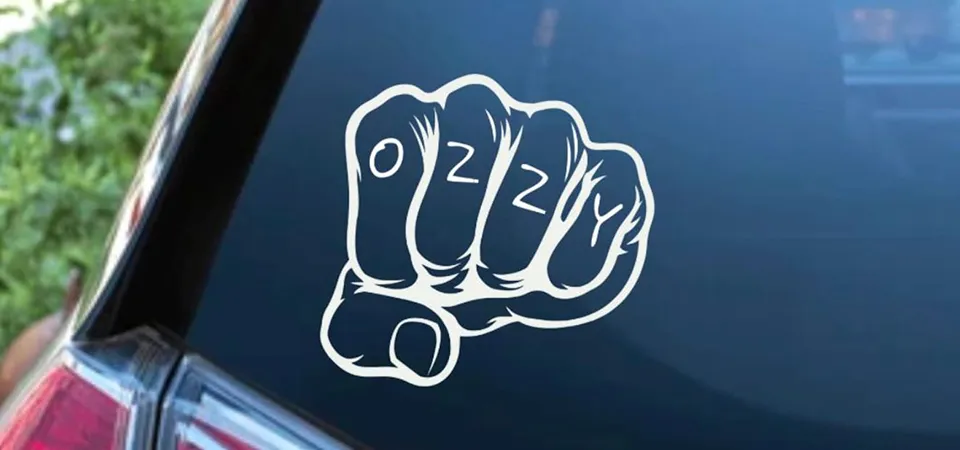
As a professional, I live by these rules. They are the foundation for every successful project and happy customer. Following this simple list will save you a lot of time and potential headaches.
Do’s
- Do clean surfaces thoroughly with isopropyl alcohol before application.
- Do use high-quality, automotive-grade cast vinyl.
- Do apply stickers in a shaded, moderate-temperature environment.
- Do use a squeegee for a bubble-free application.
- Do hand wash your car and be gentle around the sticker's edges.
- Do apply a wax or sealant over the sticker for UV protection.
- Do apply stickers only to fully cured, factory-finish paint.
Don’ts
- Don’t apply stickers to freshly painted or damaged paint.
- Don’t use harsh chemicals or abrasive tools to clean your stickers.
- Don’t aim a pressure washer directly at the edge of a sticker.
- Don’t apply stickers over complex curves or panel gaps without experience.
- Don’t place stickers where they will obstruct your vision or cover sensors.
- Don’t ignore local laws regarding window sticker placement.
- Don’t try to remove a sticker without using heat first.
Beyond Safety: What Else Should You Consider?
You know vinyl stickers are safe for your car. But you're wondering if there are any other downsides you haven't thought of, like resale value or insurance.
Consider that highly personal or controversial stickers may lower your car's resale value. Also, be mindful not to display personal information. Stickers generally don't affect insurance, but modifications for business use might, so it's always best to check.
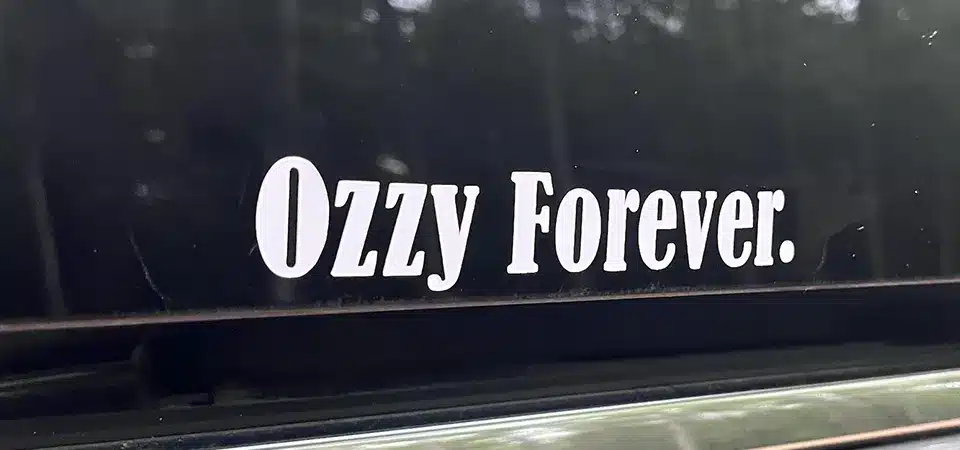
Beyond the technical aspects of application and removal, there are a few real-world considerations I always advise my clients to think about. A sticker is a public statement, and it's wise to think through the implications before you apply it.
- Resale Value: While the sticker itself won't damage the car, a potential buyer might not share your love for a particular band, political slogan, or design. Overly personalized vehicles can be harder to sell. The good news is, if you used quality vinyl, you can remove it before listing the car for sale.
- Unwanted Attention: Be mindful of what your stickers communicate. Displaying valuable brand logos (like performance parts) could attract thieves. Controversial or aggressive messages might lead to unwanted confrontations. Never display personal information like your full name or address.
- Insurance and Legal: For personal use, stickers almost never impact your insurance. However, if you are applying logos for a business, you may need to inform your insurance provider about the commercial use of your vehicle.
- Temporary vs. Permanent: Before you apply a permanent sticker, ask yourself if you will still love this design in five years. If you're not sure, you could consider using a removable indoor vinyl for a very short-term event (days, not months), or even a custom magnet.
FAQs
You still have a few specific questions. You're wondering about warranties, leased cars, and how vinyl holds up on older vehicles before you make a final decision.
A quality automotive vinyl sticker can last 5-7 years. They generally don't void paint warranties, but it's best to check. On leased cars, they're usually fine as long as you remove them before returning the vehicle.
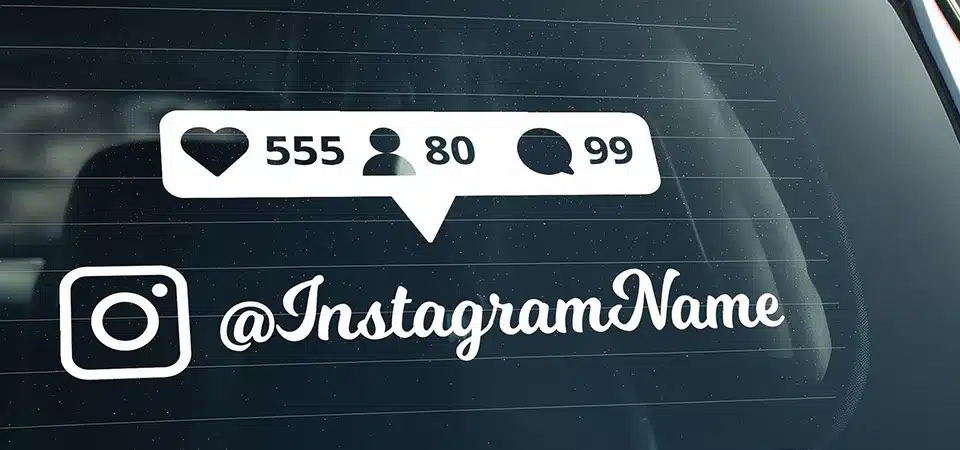
These are the final detail-oriented questions I get from customers who are ready to buy but just need that last bit of reassurance. Let's cover them quickly.
How long do vinyl stickers last on cars?
A high-quality cast vinyl sticker with a UV laminate can last 5 to 7 years, and sometimes longer, without significant fading or peeling. Cheaper calendered vinyl might only last 1 to 3 years.
Will removing a vinyl sticker void my paint warranty?
Generally, no. Since high-quality automotive vinyl doesn't damage the underlying factory paint, it shouldn't affect your warranty. However, if a sticker is applied incorrectly or a cheap one is used that does cause damage, any repair for that damage would not be covered. It's always a good idea to check your specific manufacturer's warranty if you have concerns.
What if I have an older or repainted car?
Be extra cautious. On older cars, the clear coat may be weakened. On repainted cars, the quality of the paint job is a huge factor. A cheap paint job may not have a strong bond to the car's body, and removing even a quality sticker could potentially lift the paint. I always recommend testing a small, inconspicuous area first on these vehicles.
Can I use stickers on leased vehicles?
Yes. This is a very common use case. Just be sure to use a high-quality vinyl that you know can be removed cleanly. You must remove all stickers before you return the car at the end of your lease to avoid potential cleaning or damage fees.
Conclusion
Vinyl stickers are a safe, durable, and fun way to customize your car. If you choose high-quality materials, apply them carefully, and follow a few simple care guidelines, you can enjoy your design worry-free.

